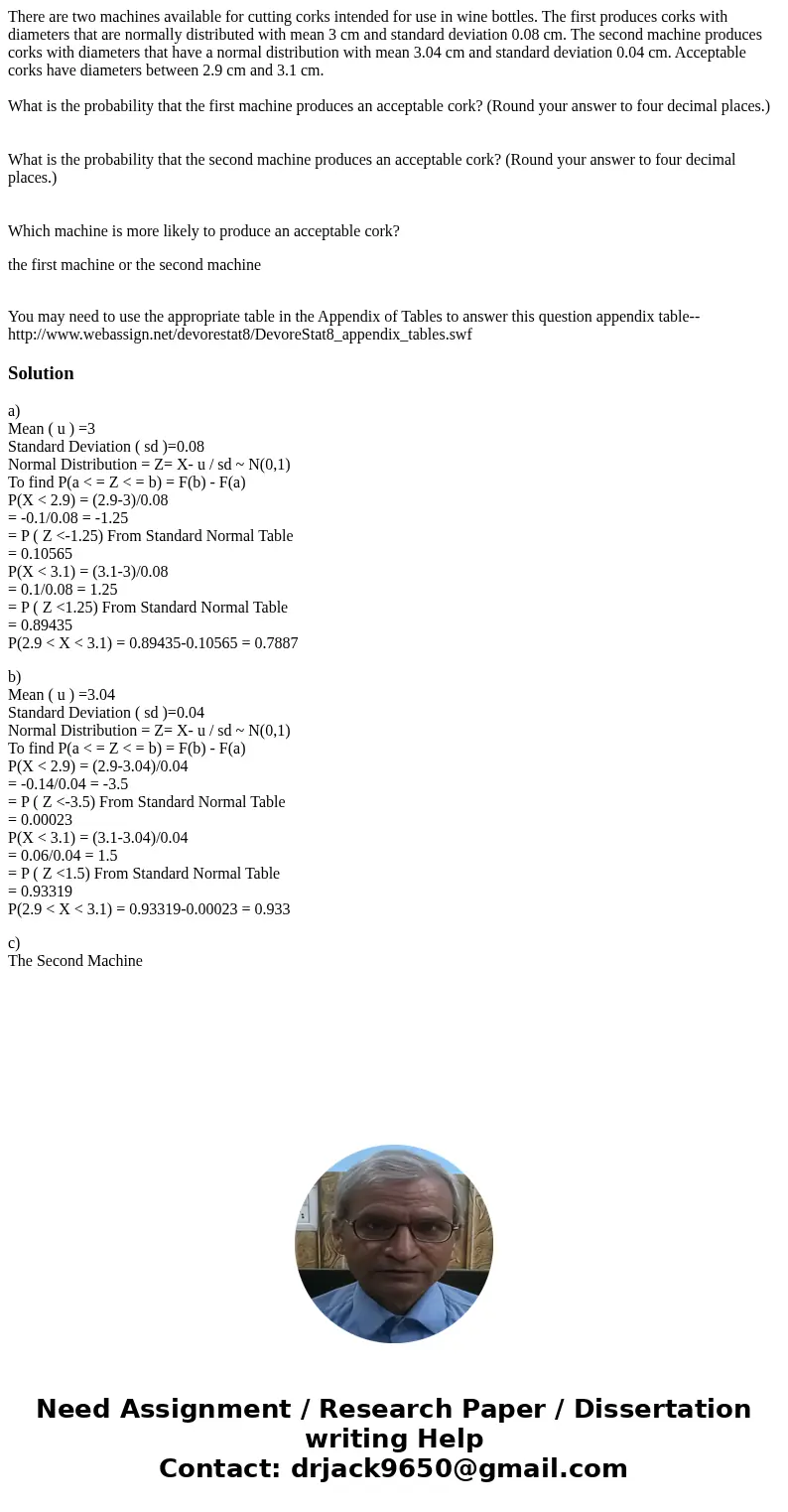There are two machines available for cutting corks intended
There are two machines available for cutting corks intended for use in wine bottles. The first produces corks with diameters that are normally distributed with mean 3 cm and standard deviation 0.08 cm. The second machine produces corks with diameters that have a normal distribution with mean 3.04 cm and standard deviation 0.04 cm. Acceptable corks have diameters between 2.9 cm and 3.1 cm.
What is the probability that the first machine produces an acceptable cork? (Round your answer to four decimal places.)
What is the probability that the second machine produces an acceptable cork? (Round your answer to four decimal places.)
Which machine is more likely to produce an acceptable cork?
the first machine or the second machine
You may need to use the appropriate table in the Appendix of Tables to answer this question appendix table--http://www.webassign.net/devorestat8/DevoreStat8_appendix_tables.swf
Solution
a)
Mean ( u ) =3
Standard Deviation ( sd )=0.08
Normal Distribution = Z= X- u / sd ~ N(0,1)
To find P(a < = Z < = b) = F(b) - F(a)
P(X < 2.9) = (2.9-3)/0.08
= -0.1/0.08 = -1.25
= P ( Z <-1.25) From Standard Normal Table
= 0.10565
P(X < 3.1) = (3.1-3)/0.08
= 0.1/0.08 = 1.25
= P ( Z <1.25) From Standard Normal Table
= 0.89435
P(2.9 < X < 3.1) = 0.89435-0.10565 = 0.7887
b)
Mean ( u ) =3.04
Standard Deviation ( sd )=0.04
Normal Distribution = Z= X- u / sd ~ N(0,1)
To find P(a < = Z < = b) = F(b) - F(a)
P(X < 2.9) = (2.9-3.04)/0.04
= -0.14/0.04 = -3.5
= P ( Z <-3.5) From Standard Normal Table
= 0.00023
P(X < 3.1) = (3.1-3.04)/0.04
= 0.06/0.04 = 1.5
= P ( Z <1.5) From Standard Normal Table
= 0.93319
P(2.9 < X < 3.1) = 0.93319-0.00023 = 0.933
c)
The Second Machine

 Homework Sourse
Homework Sourse